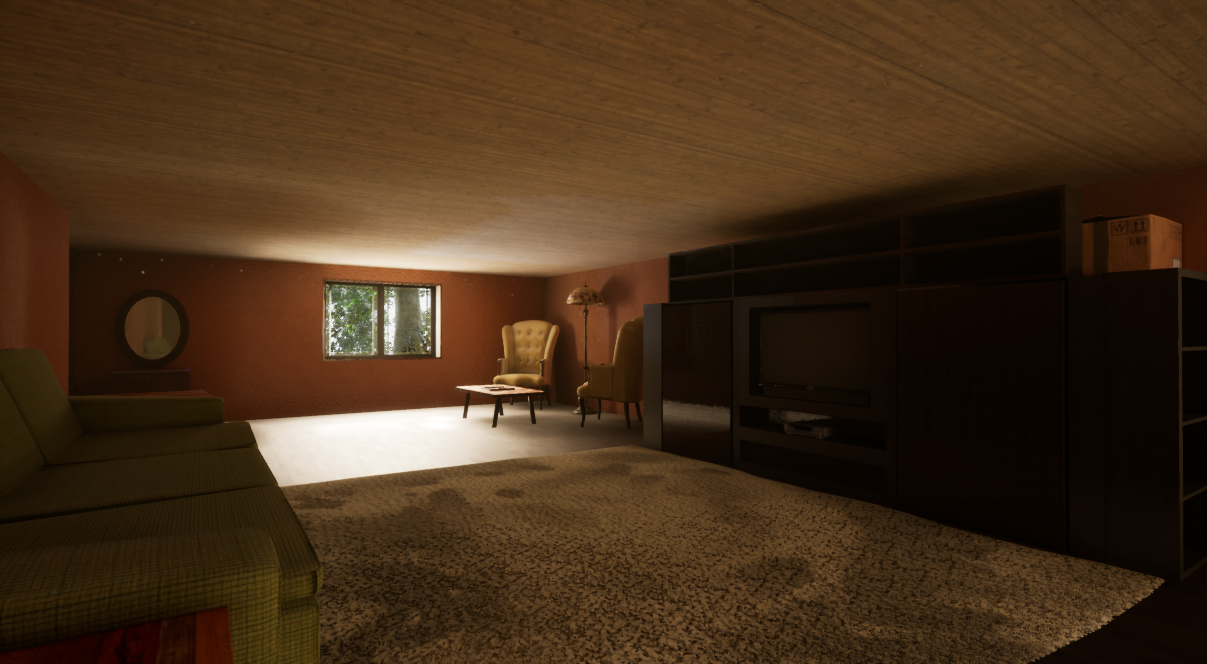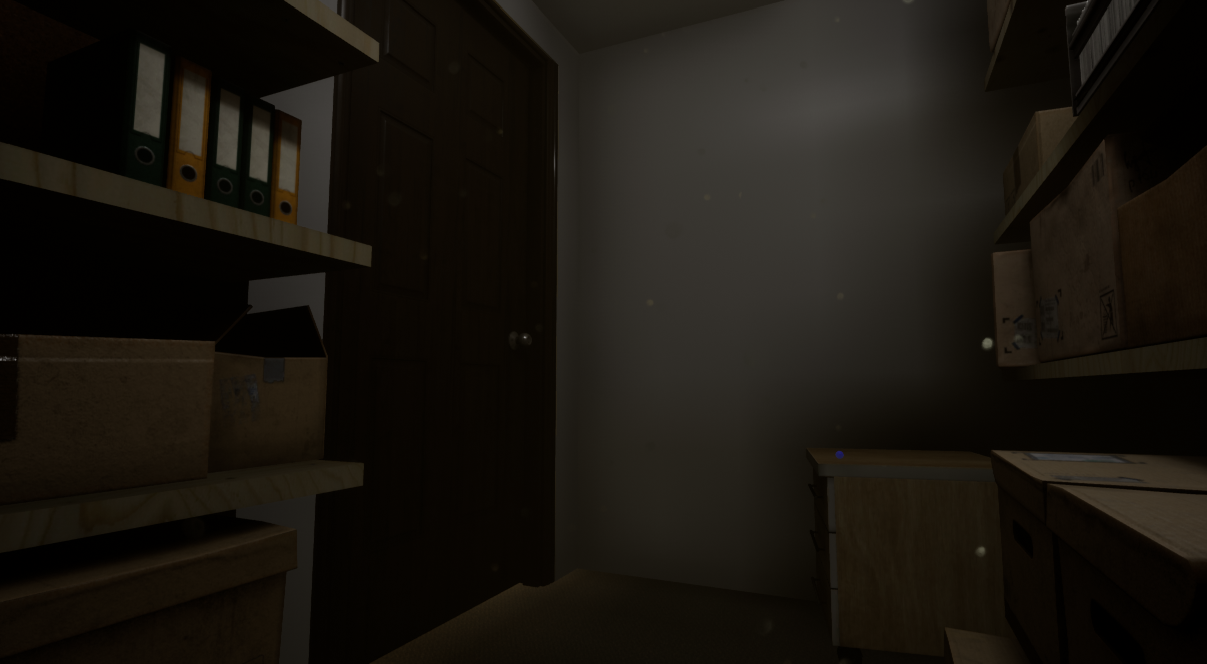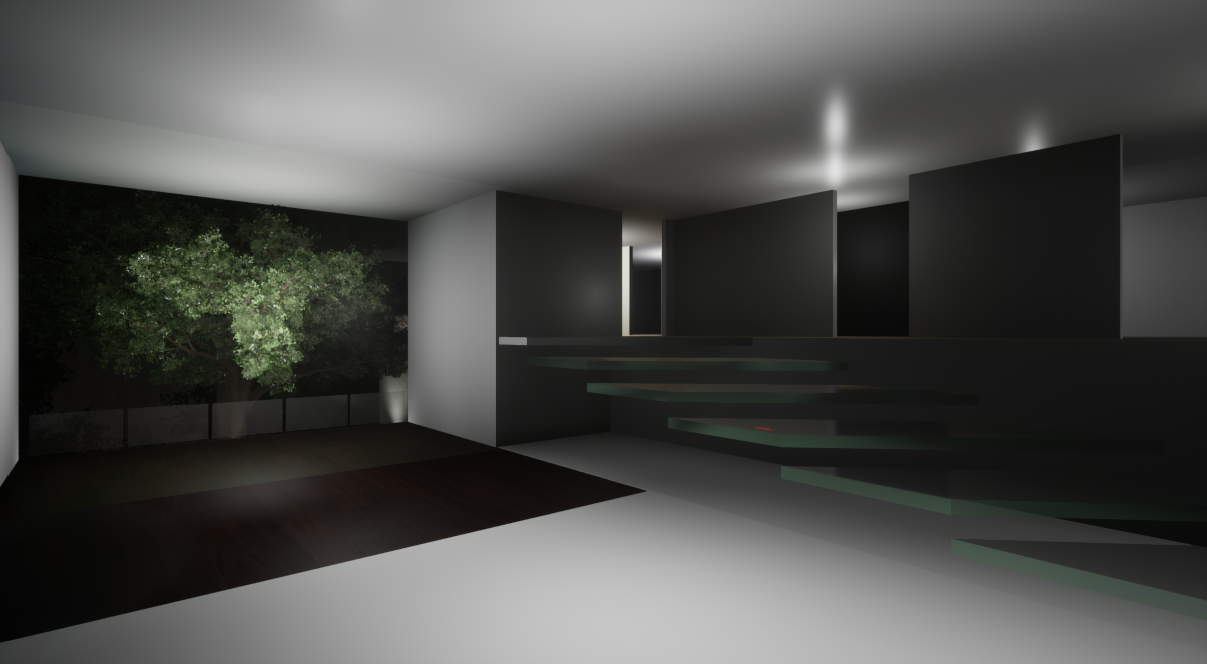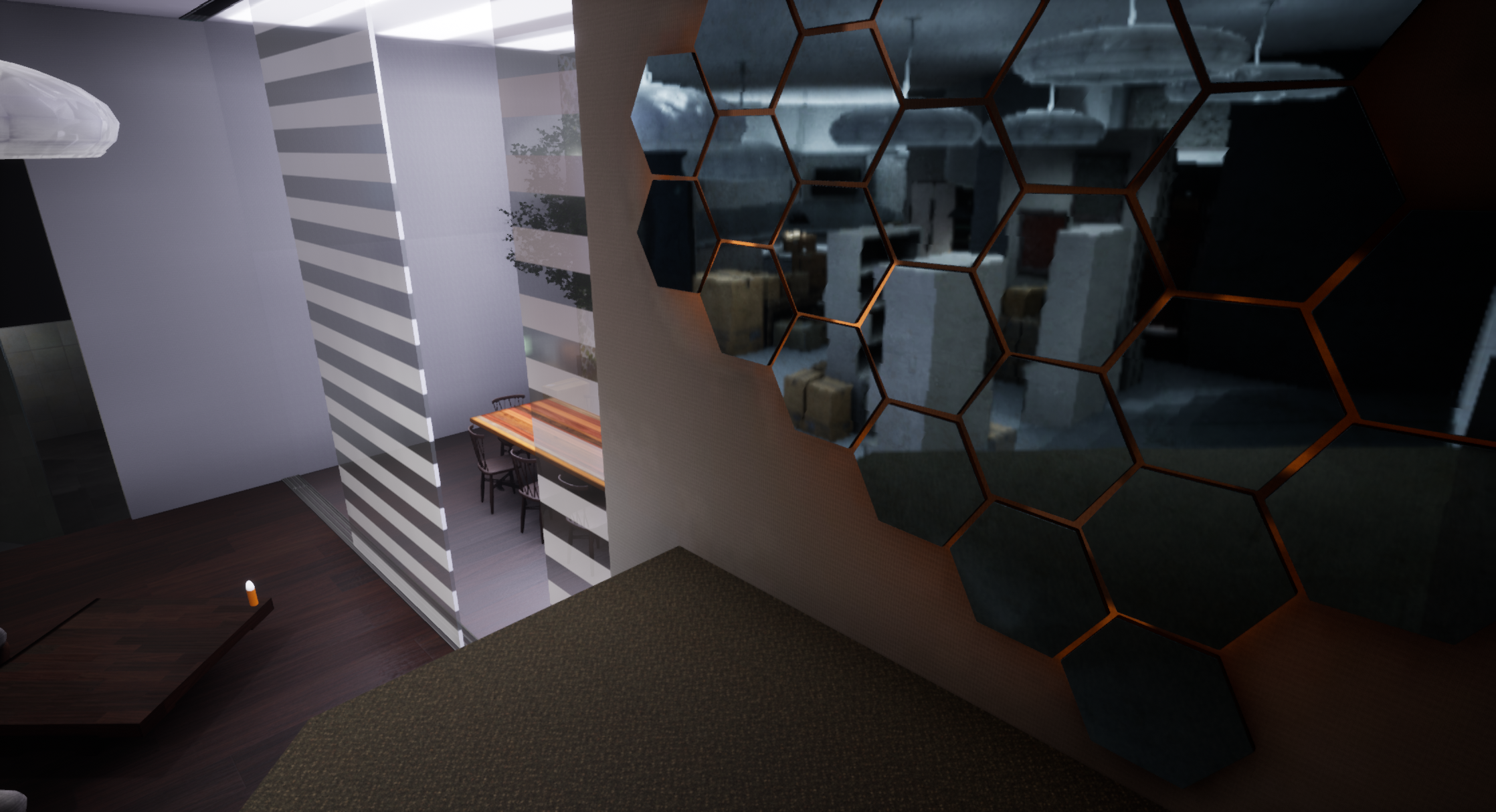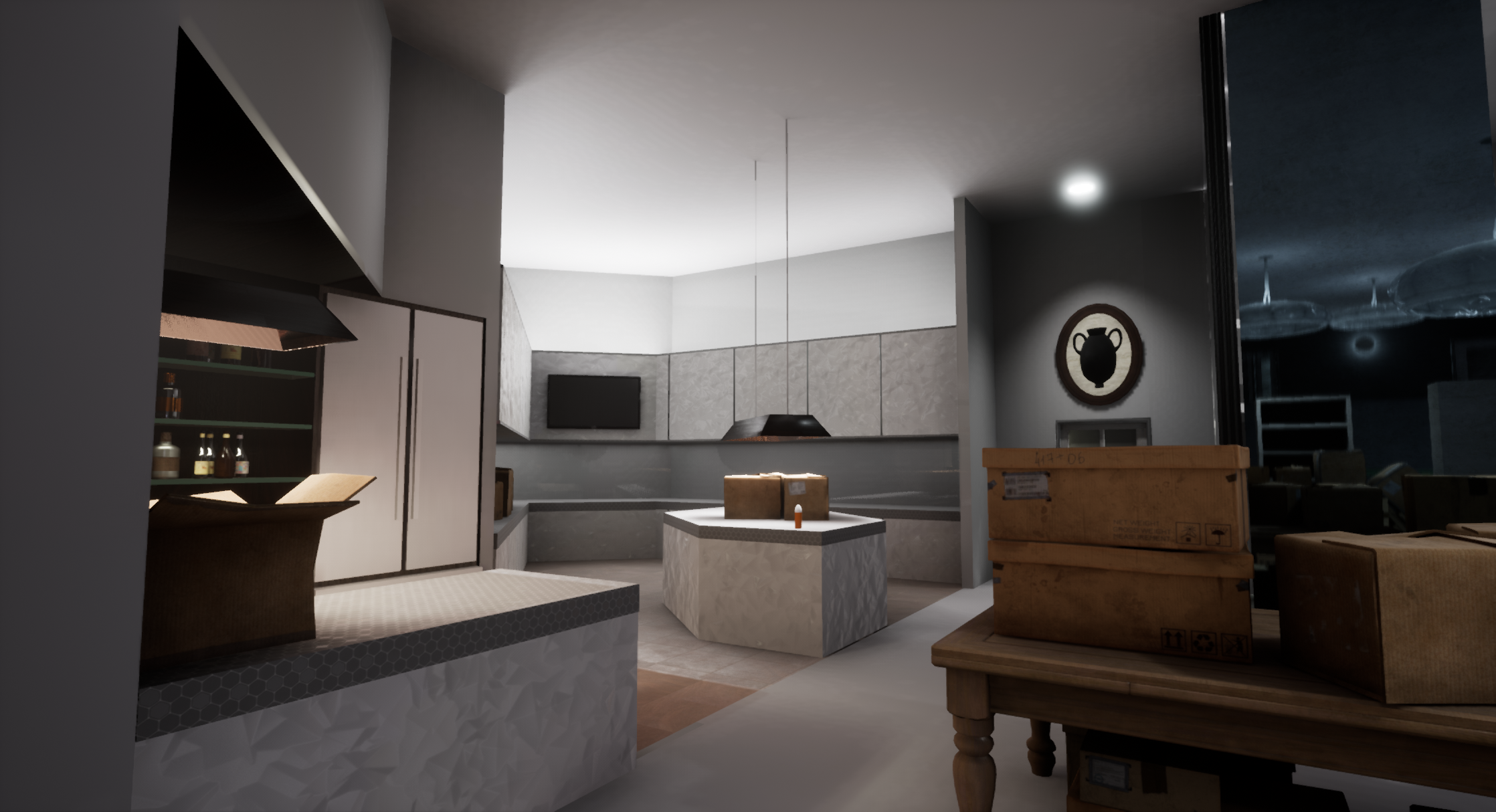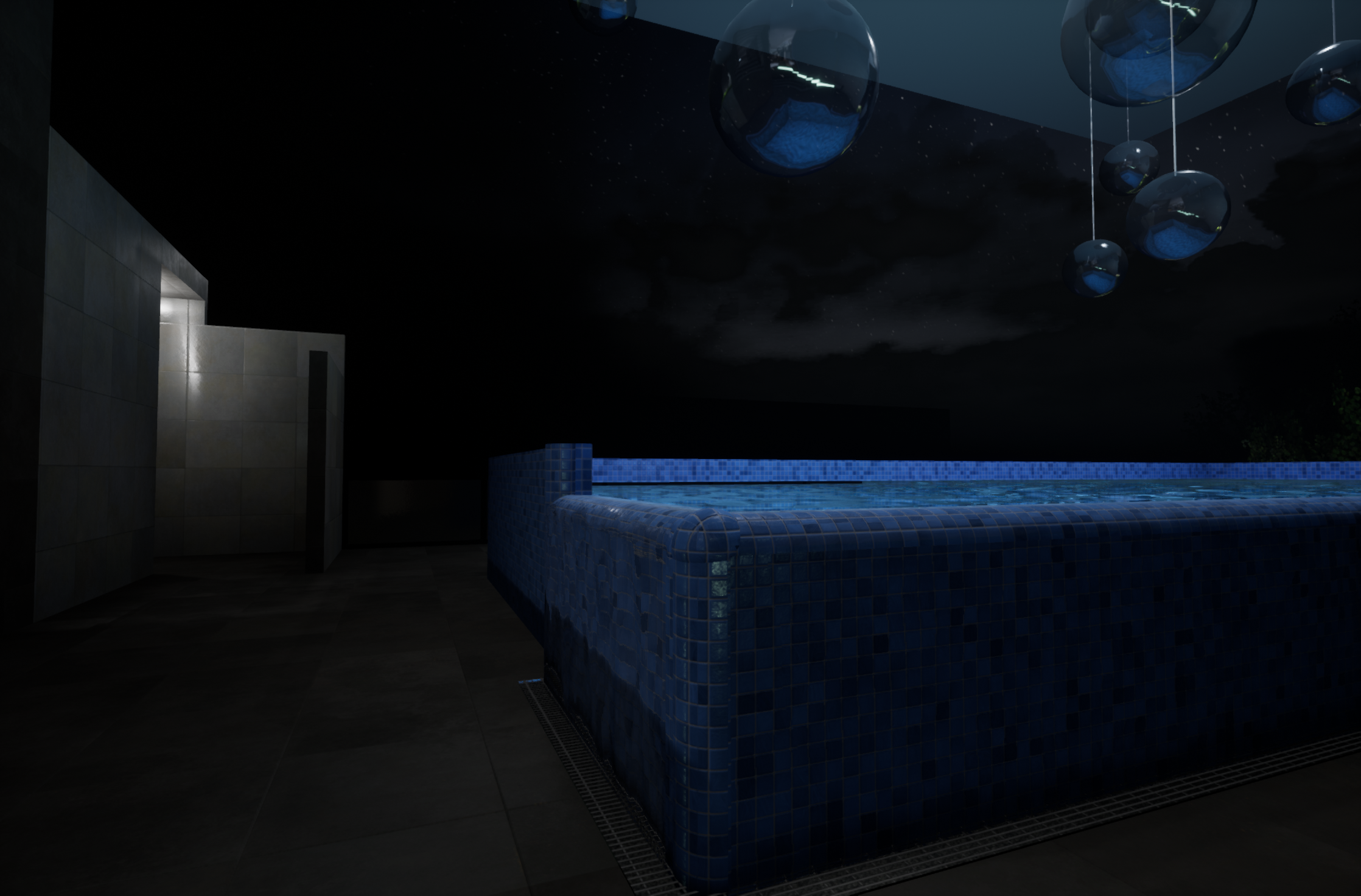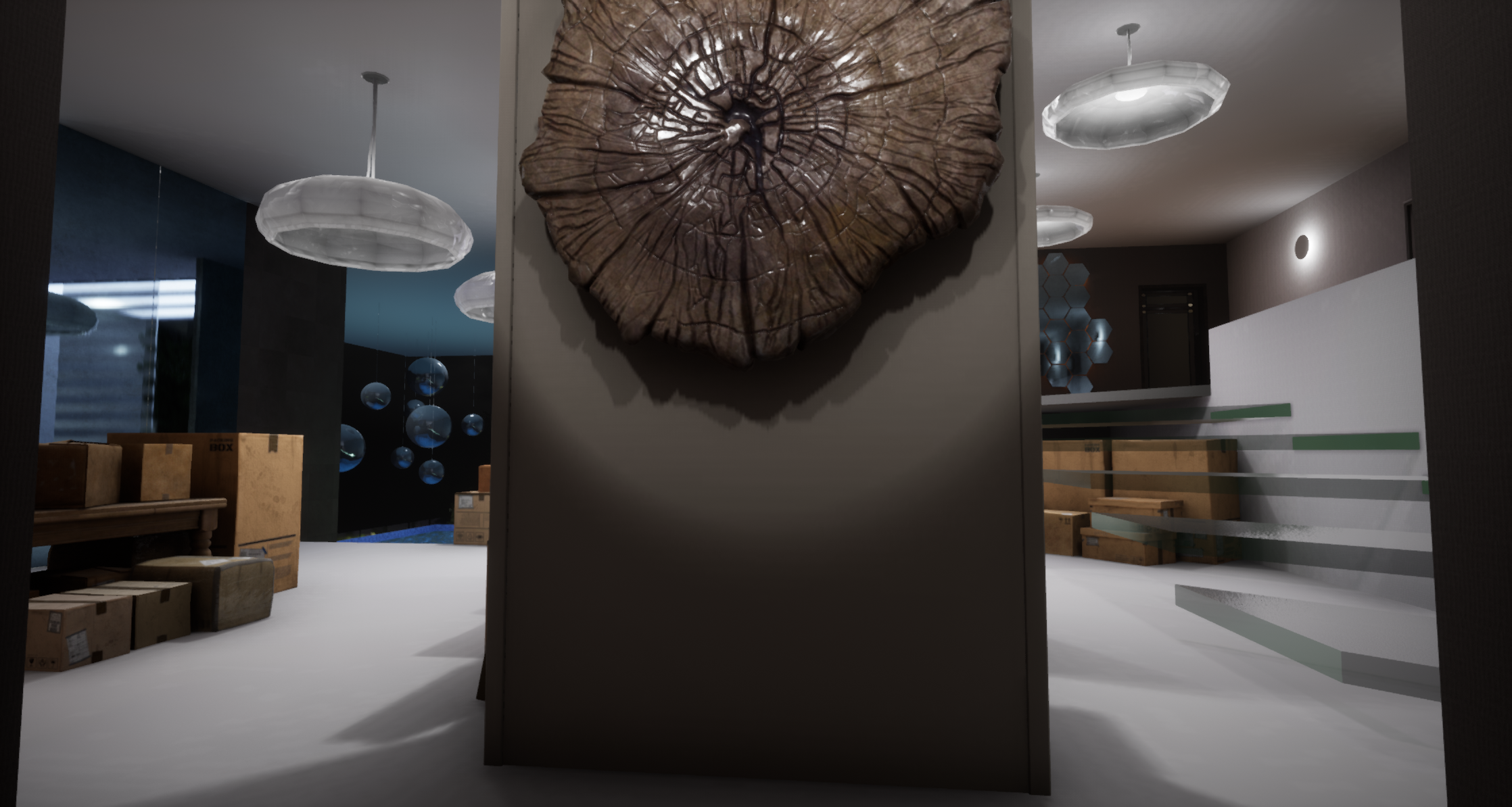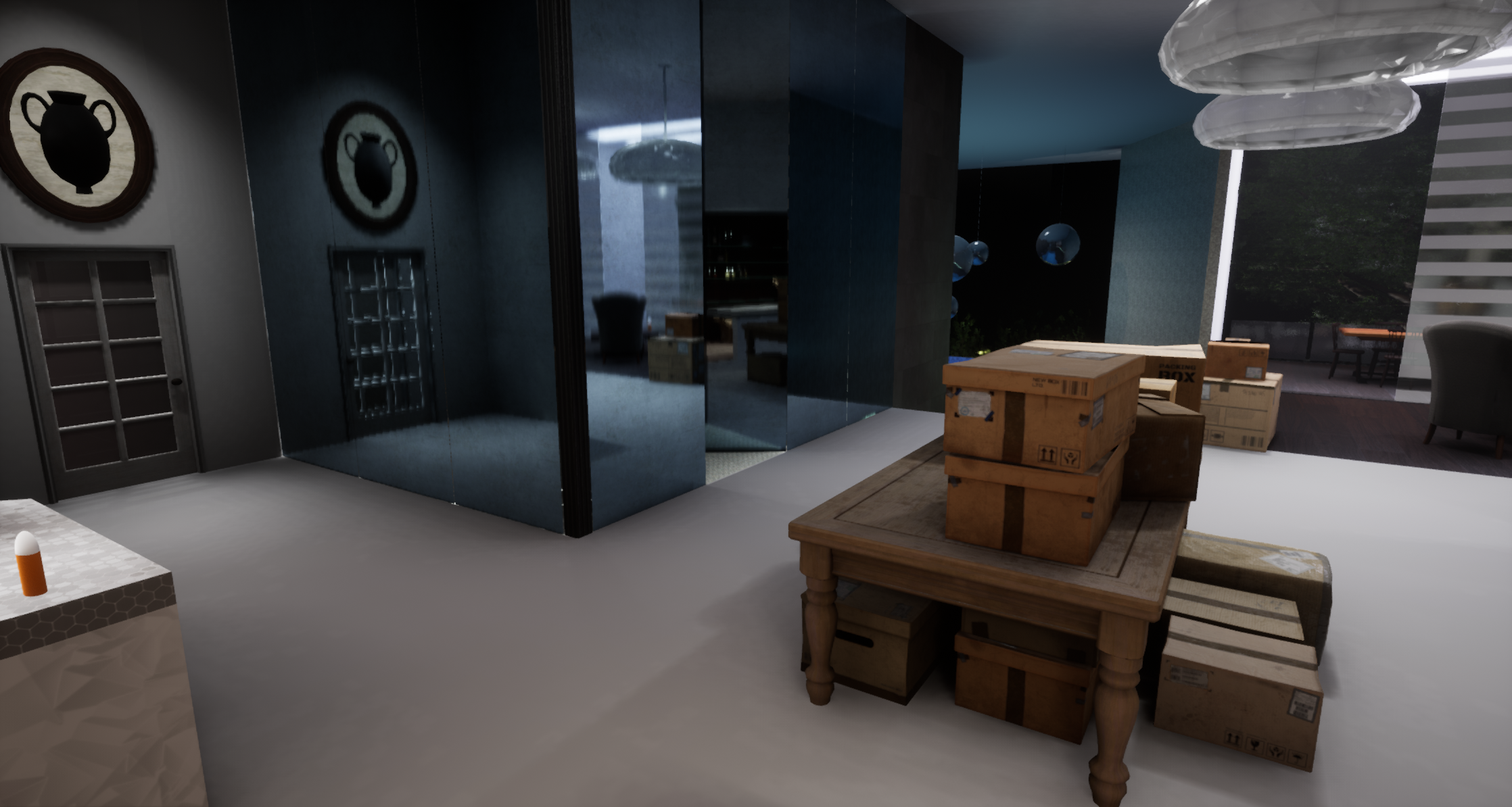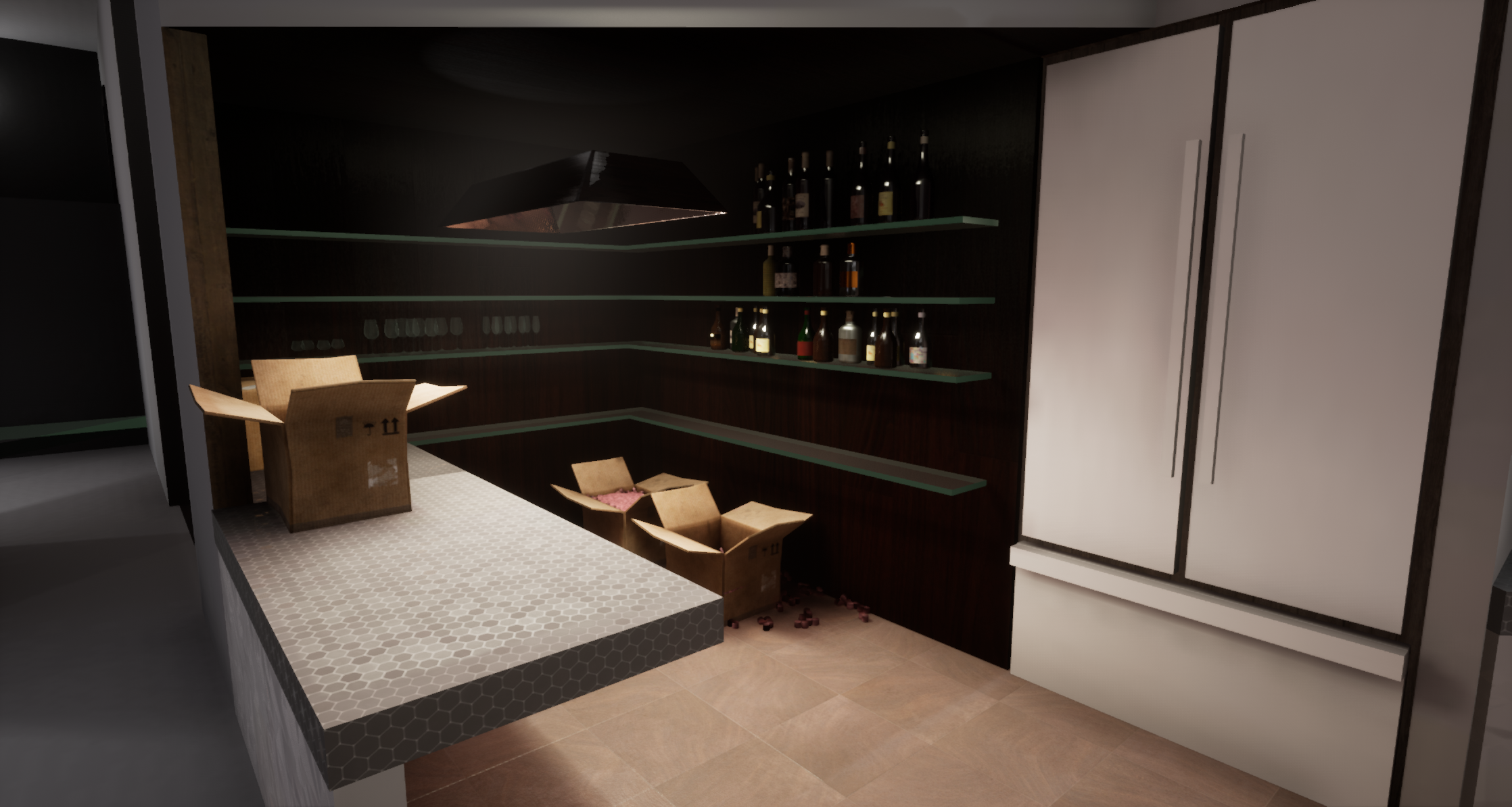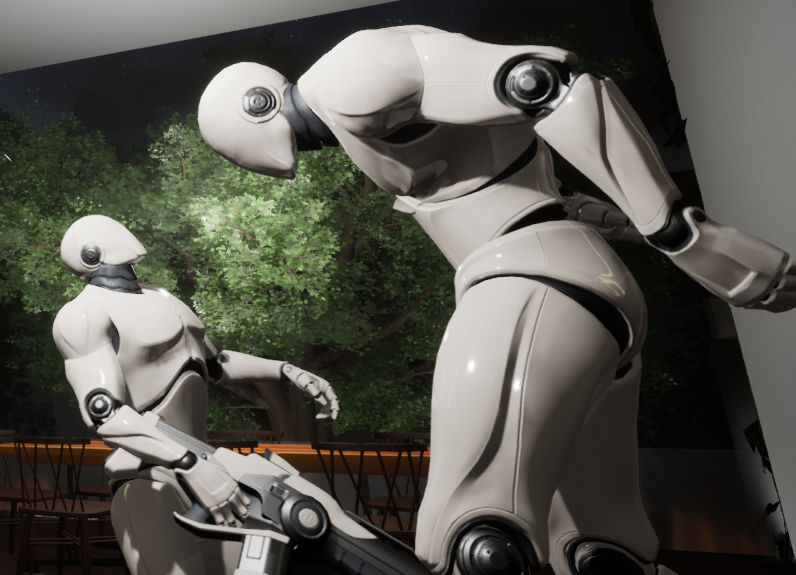Hide & Seek
Overview
Looking to add to my skillset I decided to make an AI driven game for my next project. I wanted to play with gameplay around hunting and being hunted. I was inspired by the old NES Spy vs Spy game. The basic gameplay loop of which was, look for things in hiding places, set traps to catch the other spy who is looking for the same things, and avoid the other spy.
To keep the task manageable I, once again leaned heavily on development tools. My props would be almost entirely from the free What Remains Of Edith Finch assets available in the Unreal Marketplace. While the main gameplay systems (interactions, HUD, Menus) would be handled by the Third Person Adventure Template by Palinoia Interactive.
The project is still in development but I have made the latest functioning build available here.
Currently working on
I’ve completed a first pass of the first level, as well as implementing gameplay for the second level, like adding the nerf gun mechanic. I’m working on completing the first pass of the second level’s prop layout and adding hiding spots, so that I can add the information the AI needs in order to play it’s part in the hide and seek game.
The primary objective of level one is to get candy, and hide from the adult. Currently the adult can only “catch you” if you’re hiding when they find you, and then they will merely stop being active to indicate that they’re done. If you manage to find and collect all the pieces of candy, the game will transition to level 2. Alternatively you can simply interact with the front door to go there right away. Level two has only been laid out at this point, no hiding places are available yet, but you can pick up nerf bolt and shoot them at the enemy AI. Again the only suggestion that this is working will be that the AI will stop chasing you.
Pre Production
Inspiration for Hunting. Hunting for Inspiration.
The story and gameplay went through a couple of iterations before I began developing including a rather literal interpretation. A game where the player hunts for a spy during a black tie event filled with guests, while also trying not to let the spy notice their investigations. Players would mingle among guests, all of which would have fairly simple and shared AI behaviors, gathering in small groups to talk, admiring art, getting a drink, etc. The spy and the player on the other hand would have more complex behavior. Like, purposefully navigating from point A to point B, while appearing to just be floating from one conversation group to another, causing a scene to see who reacts oddly, going into out of bounds rooms, etc.
I may yet try to tackle this game in the future, but while the ideas were cool, the scope of even a simple version of this game would require a lot of AI work, and I still didn’t have ideas for much of the actual gameplay mechanics. For example I was working with four different core behavior types with three different metrics for success, the spy, the spy hunter, the guests, and the security. I had to create a simplified model for suspicion, and identification. What I had worked out was that the spy would have three features that could be identified, and the spy hunter would be casually asking around about who had those features, eliminating suspects as they go. The spy then could, for a cost, change those identifiers, by stealing a hat, or removing a fake beard. But at that point I saw that not only would this be a great deal of AI work, but it would also require a great deal of visual design to communicate several novel and complex ideas.
Paper design floor plans for the first two levels created with Inkscape .
After that scope explosion I decided to start again from the most simple concept, hiding and hunting. I would create a simple game of hide and seek. At least starting at the simplest level meant that the next explosion of creativity could only get so big. Right?
Hide and seek is fun… right?
I whipped up a quick demo of a hide and seek game. To save brainpower on the first level I based it on the floorplan of my parents’ houses (yes they live in two houses which have nearly identical but mirrored floorplans). The coding would lean heavily on the Third Person Story Adventure template by Palinoia Interactive, which I used to manage level loads, and to make interactive hiding spots. Then I created a basic patrol and chase AI using Unreal Engine’s Blackboard, and started playing.
That’s when I remembered that hide and seek is not fun if you’re good at hiding, you just sit there waiting, until you get bored and try to get the hunter’s attention. I needed to add reasons for you to take risks and travel around the house. My simple solution: “Ooh, piece of candy!” for the first level I would put a number of little collectable candies around the house. For my second level I would put (brand nonspecific) toy darts around the apartment, which you would need to find before you could attack the NPC. Which would lead to the final of my planned levels, a combination indoor-outdoor level on a survivalist’s compound, where you would have to steal guns, set traps, gather information and finally, capture the NPC. See, I brought it back to Spy vs Spy.
In theory while the levels progressed I would be adding new elements on top of earlier elements. I would introduce hiding places, pickups, and the basics of the hunting AI in the first level. In the second stage I would introduce guns and AI that concerned themselves with ammo count and deciding between offense and defense. Then in the final level I would introduce traps, and use the landscape tool. I could focus on each new feature, adding to the list of other features like a fugue. In practice my progress has followed that progression, but less like a straight marathon, and more like suicide sprints back and forth between features.
